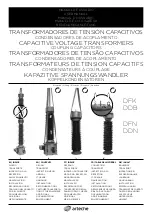
Page 38 of 40
BGX701-014-R03, User Manual for PT3 Transducers
Public
11 Frequently asked questions (FAQs)
When installing a PT3
transducer, what is the best
order in which to do things?
This is a very flexible process, which can be done in a number of ways, but
the simplest sequence is as follows:
1. Connect the PT3 transducer to ConfigView, via a USB cable
2. Configure the required parameters, then print out the configuration label
and stick it on to the PT3 transducer (if required)
3. Clip the PT3 transducer onto the DIN rail in the panel
4. Connect the inputs, outputs and auxiliary supply to the PT3 transducer
5. Power up the auxiliary supply (this will activate the new configuration in
the PT3 transducer)
6. Check the configured parameters in the PT3 transducer on Configuration
screen of ConfigView.
7. Check the operation of the PT3 transducer, if the inputs are activated on
the Reading screen of ConfigView.
ConfigView reported an
error about the USB driver
Please ensure that the USB RS-232 emulator (driver) is installed on your
system. This driver is available free of charge on the
website.
Can PT3 transducer be
configured without
connecting the auxiliary
supply?
Yes. Connect the PT3 transducer to a USB port on your PC, which will supply
power as well as allow you to read and modify the configuration settings.
Does the USB port on the
PT3 transducer support
Modbus protocol?
No.
Does the PT3 transducer
have an RS-485 output
port?
Yes. The PT3 multi-function variant has an RS-485 output port.
What does the scale factor
on a transfer characteristic
By default, the scale factor is unity, so the maximum value on the output is the
same as the primary scaling for the input. The scale factor lets you set the
value of the output to a higher or lower value, to cater for overload, or to focus



































